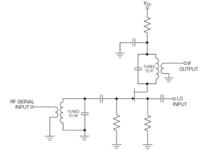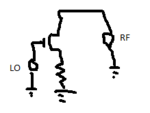shabazsyed
Junior Member level 3

HI GUYS ,
I read from RF razavi book that above shown config can be used has mixer. Can anyone help me out in designing and verifying it.Will post the results once done. IT should be in Linear region to multiple RF and Lo. For this i bias RF lower Compared to LO. Now how do i calculate the gain Equation for it. Thanx

